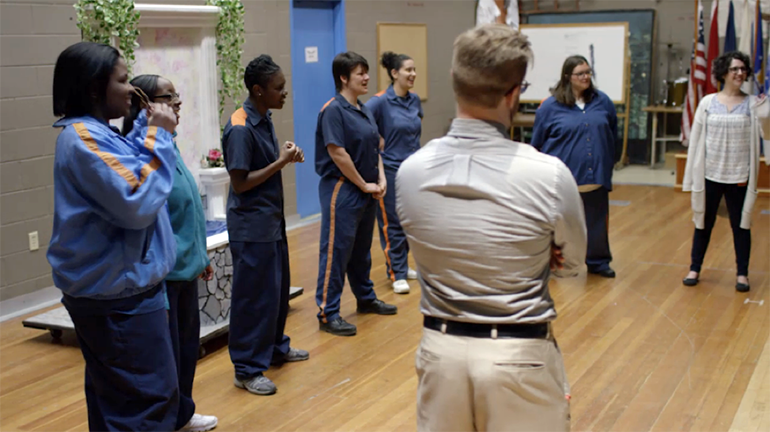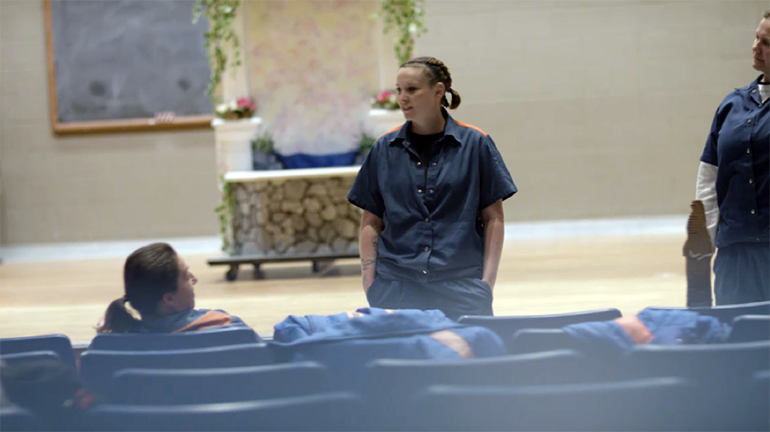Frannie Shepherd-Bates founded Shakespeare in Prison (SIP) at the Women’s Huron Valley Correctional Facility in Ypsilanti, MI in 2012 and expanded the work to Parnell Correctional Facility, a men’s prison in Jackson, Michigan, in 2017. Read Part One and Part Two.
SIP has been a success, theatrically and personally. Some who have been perceived as hard-core criminals begin to express their feelings in the program. Several men, including one born out of wedlock, started to cry when working on Edmund’s first soliloquy in King Lear. A man who had been in solitary for a time didn’t know how to be around people until he became an active member of the troupe, Shepherd-Bates reports.
Although the facilitators are theater artists, not therapists, they make inmates feel safe expressing themselves. Inmates begin to identify with characters and with each other and begin to feel connected to the company.

Photo courtesy of Shakespeare in Prison
And theater, as it always does, takes people out of themselves and their humdrum lives. Justin Greenlaw had been working as a teacher assistant for Jamie Griffith, an academic teacher who was at Parnell, when SIP came to Parnell. When Griffith suggested he become involved, he figured he had nothing better to do. But almost immediately, it made a difference in his life. “I wasn’t focusing on anything else that was going on in prison. My focus was on reading the material and learning my lines and thinking about what the play means. While you’re in there, the physical space, you forget you’re incarcerated. You’re able to be fully present there. The guards don’t hover over you, and you’re able to go into a completely safe space. It gave me something to completely devote myself to that didn’t feel like anything related to prison.”
“It’s helpful to have something to do to not focus on how slowly time is passing and to feel like what I’m contributing is meaningful,” says Nichole Frederick.
Griffith, who was instrumental in bringing SIP to the men’s facility, feels integrating the arts into the rest of the prison program is crucial to rehabilitation. Frederick notes that working with restrictions in the theater on the inside prepared her to be more accepting of rules and guidelines in the workforce when she got out. And more understanding of laws.

Photo courtesy of Shakespeare in Prison
SIP gave some the chance to see themselves in new roles, not just on stage. One ensemble member had an interest in history, for instance, and began reading about the Wars of the Roses. When she shared what she knew with the company of Richard III, she found a better role than convict: dramaturg. And she began to direct her research to what cast members thought would be useful to their work.

Photo courtesy of Shakespeare in Prison
The audience? Many inmates and some staff come to the shows. “They are the best audience. They know what our limitations are and don’t care that the costumes aren’t full period costumes,” Shepherd-Bates says.
Says Greenlaw, “The audience there had never seen anything like it. Most had never seen a play of any kind in their lives.”